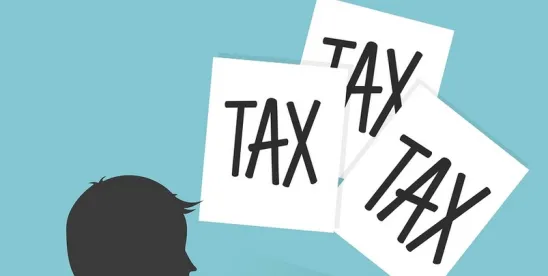Proposed regulations add significant complexity and reporting burdens to tax compliance
The Internal Revenue Service (“IRS”) has released proposed regulations explaining how taxpayers should calculate the Section 199A deduction for qualified business income. To provide tax rate parity with corporate rate cuts, the Tax Cuts and Jobs Act (“TCJA”) allows a deduction of up to 20% of income from a domestic business operated as a sole proprietorship or through a partnership, S corporation, trust, or estate. Many conditions, limitations, and restrictions apply, however, and business owners have been eagerly waiting for guidance from the U.S. Department of the Treasury so they can determine whether they will qualify for the Section 199A deduction and how large the deduction will be.
The proposed regulations include computational, definitional, and anti-abuse guidance. Although the TCJA was intended to simplify the tax code for individuals and small businesses, the 199A rules are replete with complicated multi-step calculations, terms and definitions, and new acronyms that taxpayers must learn and understand to accurately calculate their deduction. As is often the case, the proposed rules answer many questions but leave others on the table and create new ones in the process.
Complex New Calculations for Individuals
Demonstrating the complexity of the new rules, computing the amount of the deduction can require an individual business owner to determine his or her qualified trade or business income (“QBI”); whether he or she falls above or below certain threshold amounts; whether he or she falls within a phase-out range, a W-2 wage limitation, an unadjusted basis immediately after acquisition limitation (“UBIA”), or a taxable income limitation; whether he or she is engaged in a specified service trade or business (“SSTB”); and applicable real estate investment trust (“REIT”) dividends and distributions from publicly traded partnerships (“PTP”). Additional challenges apply to business owners with multiple businesses who must consider aggregation, allocation, and netting rules.
While there are many terms and definitions specific to the 199A rules, a particularly complex set of definitions applies when determining whether an enterprise is an SSTB. This characterization is important because owners of SSTBs with incomes exceeding $157,500 (individuals) and $315,000 (married) are ineligible for the deduction after phase-out amounts of $50,000 and $100,000, respectively. While many categories of service businesses may seem clear, the regulations contain a few surprises about others. For instance, if the principal asset of a trade or business is the “reputation or skill” of the entity’s owners or employees, the 199A deduction cannot be taken. The proposed rules interpret “reputation or skill” more narrowly than expected, limiting the scope primarily to services often associated with show business and reality TV stars, including personal appearances, use of images, and endorsements. As a result, while many in the entertainment industry will not be able to enjoy the deduction, many other types of service businesses that rely to varying extent on reputation and skill will qualify. The regulations also create winners and losers between service industries that appear to have similar functions. For example, investment services do not qualify for the deduction while many banking services do. The definitions of specified service businesses can be expected to be challenged in comments responding to the proposed rules.
Significant New Reporting Burdens on Pass-through Entities
While the deduction applies at the individual owner level, the new rules also apply to the relevant pass-through entities (“RPE”) they own by imposing significant new reporting requirements. RPEs must determine and report to owners each owner’s allocable share of QBI, W-2 wages, and UBIA, as well as whether the RPE is an SSTB. In addition, RPEs must separately report any QBI, W-2 wages, UBIA, and SSTB determinations reported from lower-tier RPEs. Each owner’s share of allocated qualified REIT dividends and PTP income or loss also must be reported by the RPE. If the RPE fails to report, the IRS will consider the owner’s share to be zero, effectively denying the 199A deduction to the owner for that income.
Understand How the New Rules Affect You and Your Business
While this alert highlights several important features of the proposed regulations, numerous others are likely to have widespread impact. Individuals reporting trade or business income from a sole proprietorship or a pass-through entity, as well as partnerships, S corporations, trusts, and estates that have qualified business income, must understand how these rules apply and the ramifications of failing to comply. Please contact any member of the K&L Gates tax policy and tax teams to assist in determining the impact of the new rules on you and your business or if you wish to submit comments to the IRS to consider as the final regulations are drafted. Comments are due to the IRS by September 30. For additional information, see our prior alert “Proposed Regulations Provide Welcome Guidance for 20% Pass-Through Deduction.”






 />i
/>i

